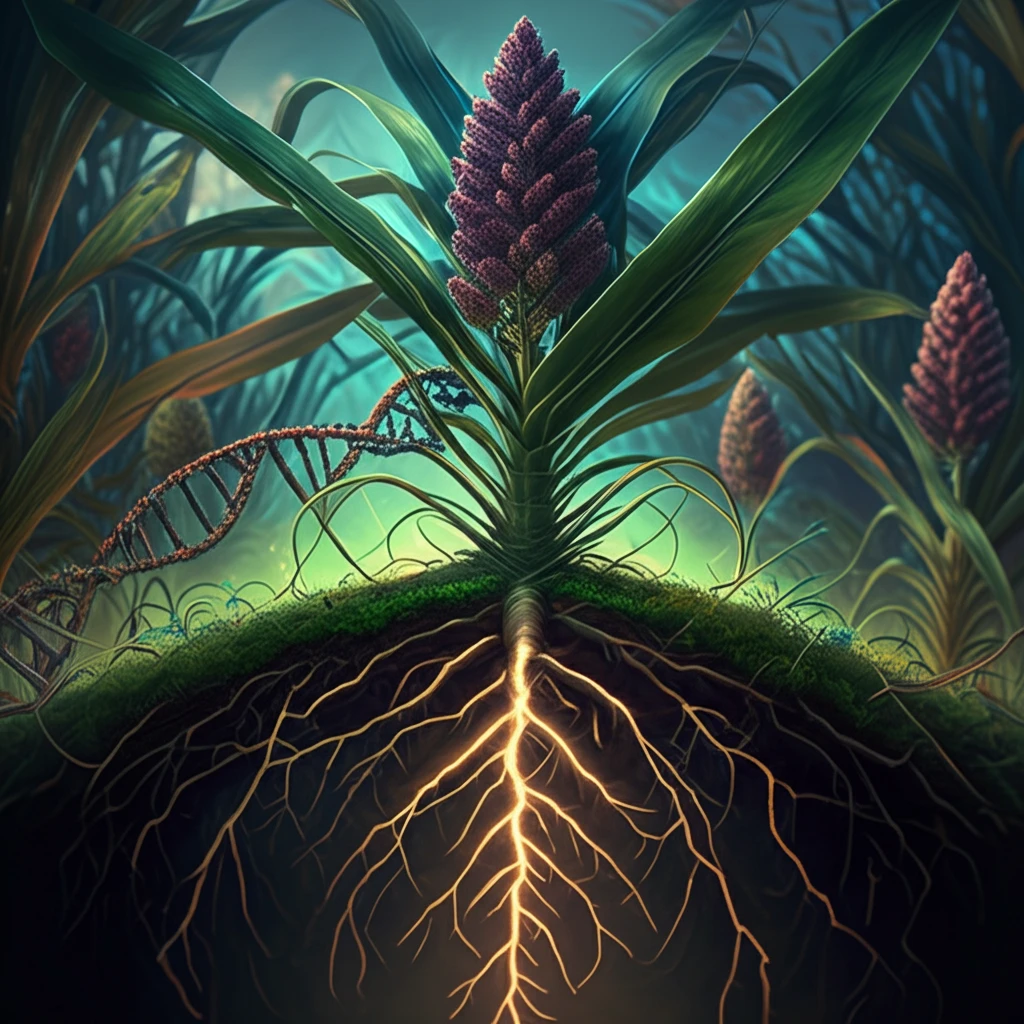
Unlocking Al Tolerance: How Sweet Sorghum Could Revolutionize Crop Production
"Discover how a novel pathway in sweet sorghum (Sorghum bicolor) enhances aluminum tolerance in plants, paving the way for sustainable agriculture in acidic soils."
Acidic soils, covering approximately 50% of the world's arable land, present a major challenge to agriculture. This problem is compounded by human activities that exacerbate soil acidification, leading to increased aluminum (Al) toxicity. When soil pH drops below 5, Al ions become soluble and are readily absorbed by plant roots, causing rapid inhibition of root elongation and hindering water and nutrient uptake—essential processes for plant growth and survival.
Plants have evolved intricate mechanisms to combat Al toxicity, utilizing various genes and transcription factors to manage Al stress. Among these, STOP1-like transcription factors, a type of C2H2 zinc finger protein, have emerged as key regulators in Al tolerance. These factors influence the expression of multiple Al-responsive genes, thereby modulating a plant's ability to withstand toxic conditions. Understanding these regulatory pathways is crucial for developing strategies to improve crop resilience in acidic soils.
Recent research has shed light on the critical role of sweet sorghum (Sorghum bicolor) in Al tolerance. Scientists have discovered that a transcription factor called SbSTOP1 in sweet sorghum activates the expression of a β-1,3-glucanase gene known as SbGlu1. This activation reduces callose deposition under Al toxicity, revealing a novel pathway for Al tolerance in plants. Callose, a cell wall-associated polysaccharide, contributes to Al toxicity by blocking symplastic transport in plants.
How Does SbSTOP1 Protect Sorghum from Aluminum Toxicity?

The study, conducted by Jie Gao, Siqi Yan, and colleagues, investigated how SbSTOP1 regulates the expression of SbGlu1, a gene encoding a β-1,3-glucanase. Glucanase are enzymes that break down callose, a substance that accumulates in plant roots under Al stress. Excessive callose deposition can disrupt nutrient and water transport, exacerbating the toxic effects of Al. By activating SbGlu1, SbSTOP1 helps to degrade callose, alleviating the stress on the plant.
- Identifying SbSTOP1's Role: Researchers successfully identified SbSTOP1's role in regulating SbGlu1 expression, a gene crucial for callose degradation under Al stress. This was achieved using a combination of advanced molecular techniques.
- HEK293 Coexpression System: This system was instrumental in confirming that SbSTOP1 interacts with the SbGlu1 promoter. The dual-luciferase reporter assay allowed the team to precisely measure gene expression levels.
- Dual-Luciferase Reporter Assay: By employing this assay in both HEK293 cells and Arabidopsis protoplasts, the team verified that SbSTOP1 transcriptionally regulates SbGlu1. This confirmed SbSTOP1's direct influence on gene expression in different plant systems.
- Electrophoretic Mobility Shift Assay (EMSA): EMSA was crucial in demonstrating that SbSTOP1 directly binds to specific DNA sequences in the SbGlu1 promoter, confirming physical interaction.
Implications for Future Agriculture
This research offers valuable insights into the molecular mechanisms underlying Al tolerance in plants and highlights the potential of SbSTOP1 as a target for improving crop resilience in acidic soils. By understanding how SbSTOP1 regulates callose deposition, scientists can develop strategies to enhance Al tolerance in a variety of crops, ensuring sustainable agricultural practices and food security in regions with challenging soil conditions. As climate change and soil degradation continue to threaten global food production, innovations like these offer hope for a more resilient and sustainable future.
